Sun 6 Jan 2019
Wildlife at Mitchell cabin: Part 2
Posted by DavidMitchell under West Marin nature, Wildlife
[3] Comments
Caveat lectorem: When readers submit comments, they are asked if they want to receive an email alert with a link to new postings on this blog. A number of people have said they do. Thank you. The link is created the moment a posting goes online. Readers who find their way here through that link can see an updated version by simply clicking on the headline above the posting.
This is the second of two postings that show some of the animals which thrive around Mitchell cabin. The first posting focused on mammals I’ve seen and managed to photograph. Part 2 will feature amphibians, reptiles, and birds.
We will begin with some of the amphibians.
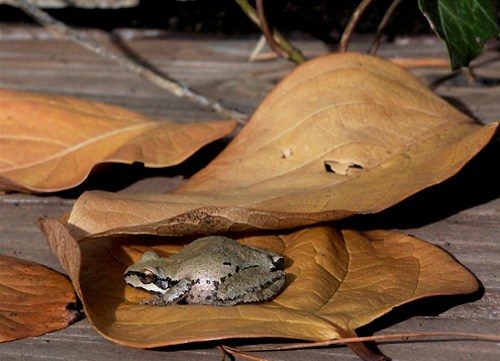
A Pacific Tree Frog chirps and then takes a rest on our deck.
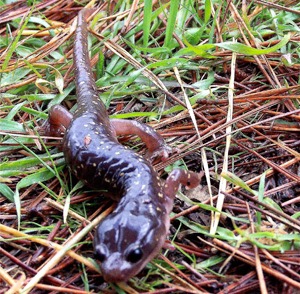
An Arboreal Salamander crawls away from a tree.
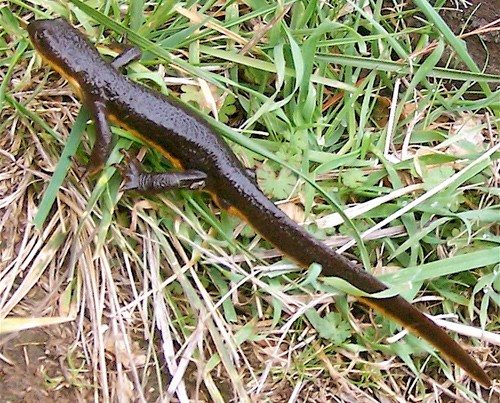
A California Newt beside our front steps.
And now for reptiles
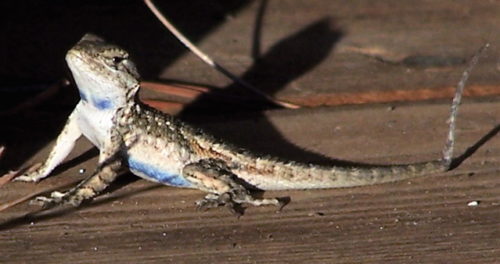
A male Western Fence Lizard, commonly known as a ‘Blue Belly,’ performs pushups to attract females and to warn off other males.
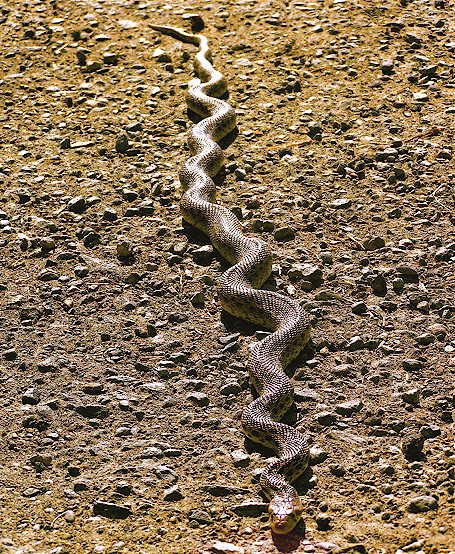
A Gopher Snake basking in sun near our driveway.
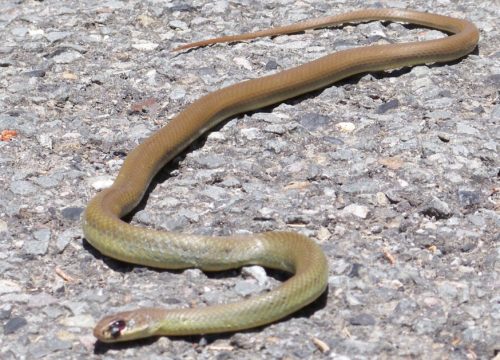
A Rubber Boa with a tick just below its left eye. Rubber Boas, which can measure more than 2.75 feet, are extremely docile with humans and will give off a stench rather than bite. They feed on young mice, snake eggs, lizard eggs, and young birds.

A Pacific Ringneck Snake that I found in a rotten log.
Birds
We put out birdseed on our deck every day, but what turns out to be almost as important to some birds is our birdbath, from which they regularly drink and in which they periodically bathe, and even prepare dinner, as you’ll see.
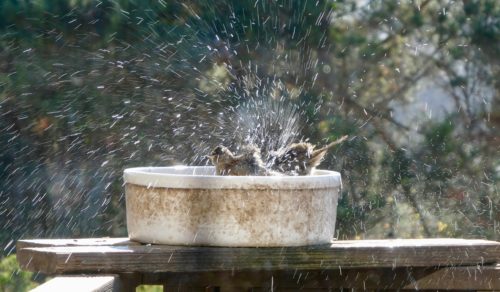
Two sparrows immodestly bathing together.
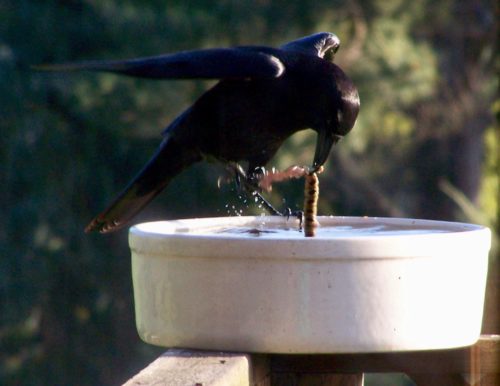
A raven uses the birdbath for skinning a caterpillar.
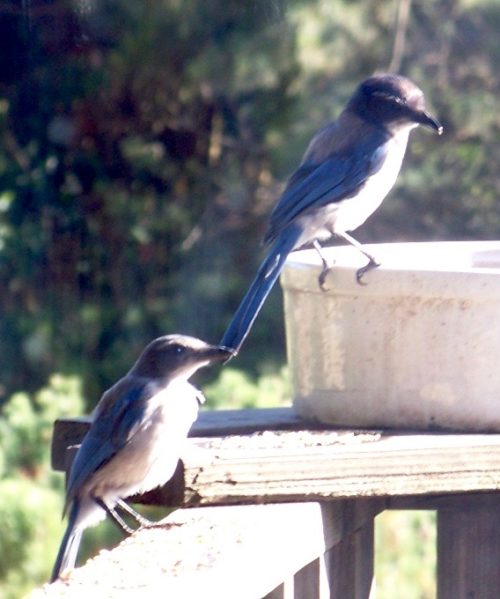
Two California scrub jays stop by the birdbath for a drink.
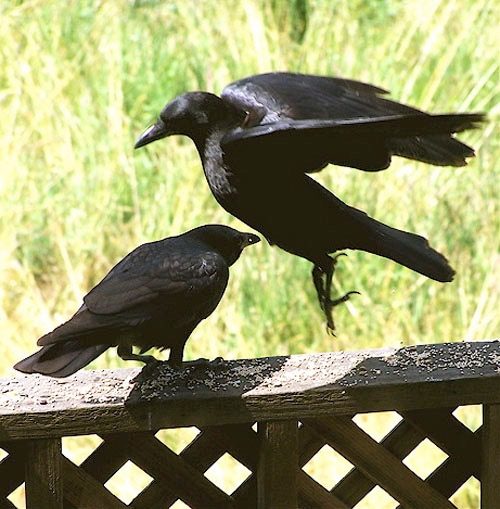
A crow gracefully hops over another crow to get to the birdbath.
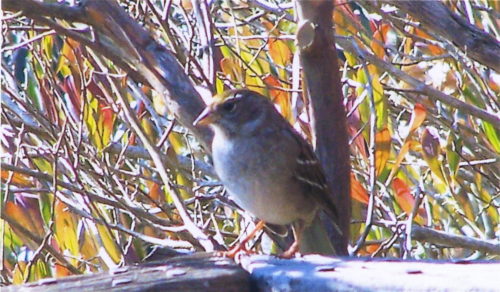
A Golden-Crowned Sparrow disguised as a stained-glass window. The Golden-Crowned Sparrow’s distinctive, three-note song is essentially Three Blind Mice sung in a minor key.
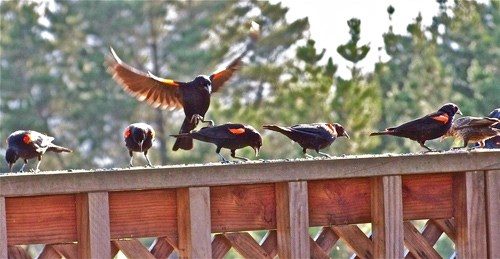
Redwing Blackbirds eating birdseed on the railing of our deck.
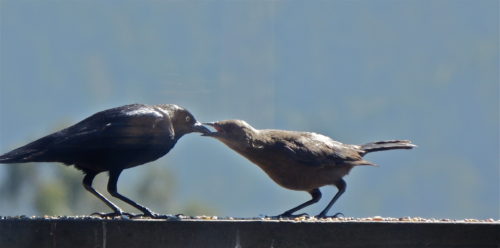
A Brewer’s Blackbird feeds seeds to its young. Along with seeds, Brewer’s Blackbirds eat insects, spiders, and berries.
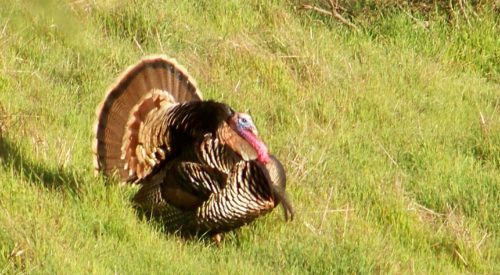
A (Tom) Wild Turkey near Mitchell Cabin. In 1988, a hunting club working with the State Department of Fish and Game introduced non-native turkeys into West Marin on Loma Alta Ridge, which overlooks the San Geronimo Valley. By now there are far more turkeys than turkey hunters, and their flocks have spread throughout West Marin.
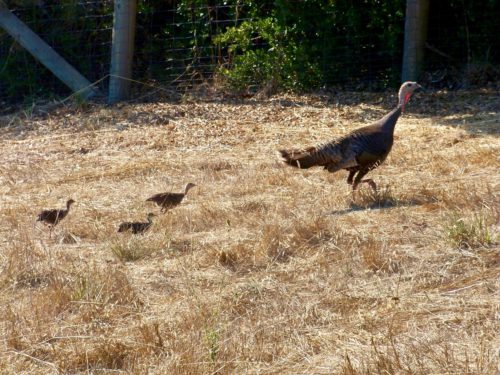
A (hen) Wild Turkey leads her offspring uphill outside our kitchen window.

Seven Wild Turkeys forage with four Blacktail deer near our woodshed.

Wild turkeys, at least on this hill, have remarkably easy relations with several other species, including this lonely peacock that sometimes hangs out with them.
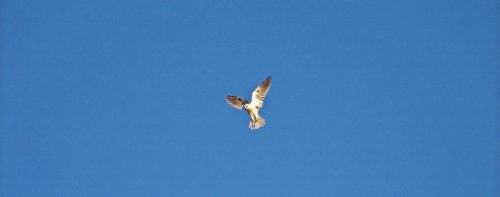
A White-Tailed Kite hovers over our field hunting for rodents. (They rarely eat birds.) Eighty years ago, the White-Tailed Kite was on the verge of extinction in California as a result of shooting and egg collecting, but White-Tails have now recovered to where their survival is no longer a concern to government ornithologists.
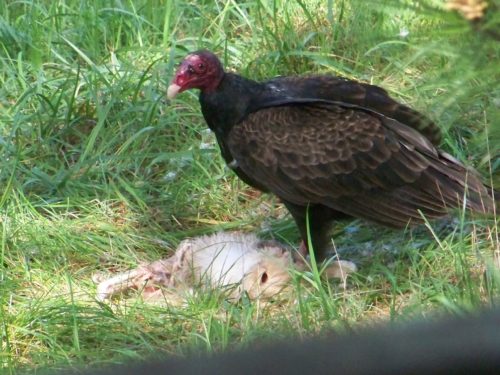
A turkey buzzard dines on carrion just below our deck. As for how the cat died and how it got there, I have no idea. Everything has to end somewhere, I suppose, and I guess this is the time and place to end this posting.

So much available to a discerning eye like yours. Red in tooth and claw, ballet, grace, and reward to us.
Wow Dave, and you know All the names of these creatures too. Makes since to me, about the snakes around there, will eat the nice. I Never thought of that. You are not just living in Wildlife, you are taking some Beautiful Photos. I Never knew about all Snakes and tree frogs around your house. Thank you for All the good information. I learn something new Every time I look at Your Blog
Still hoping to get notifications